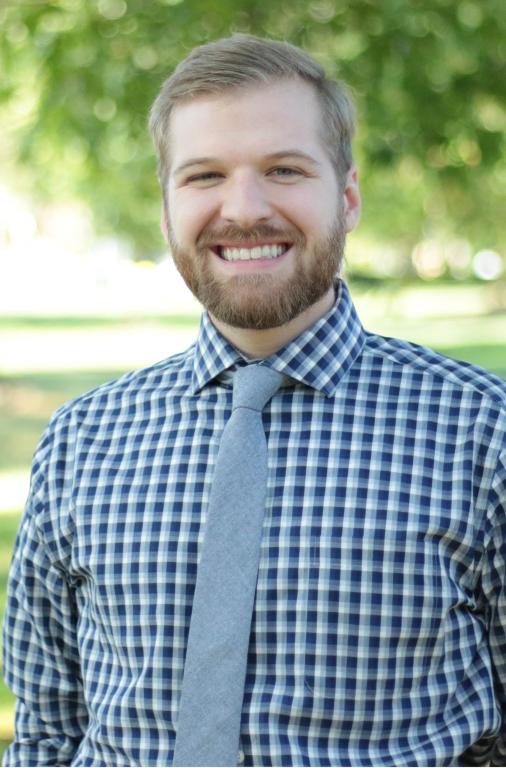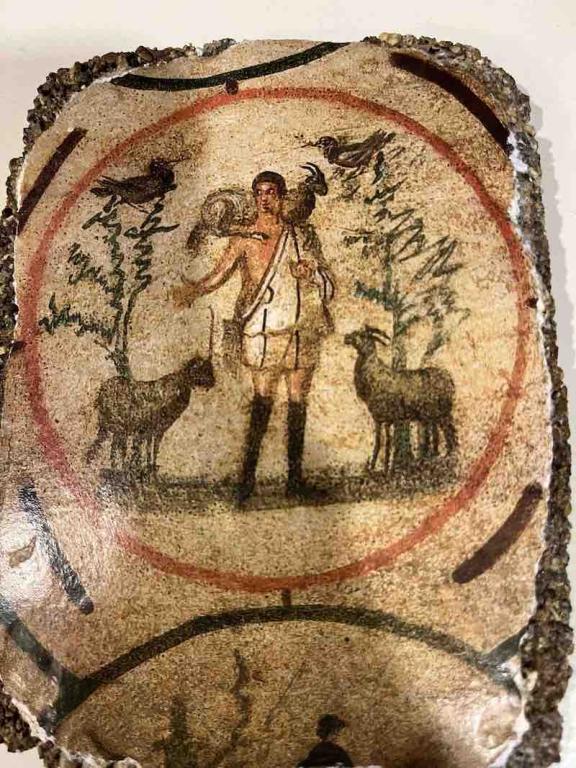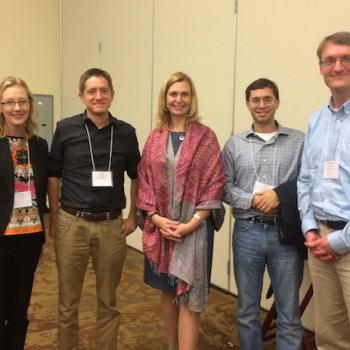
Last week I stood in the early Christian catacombs. Just feet below some of the busiest streets of Rome, third and fourth century followers of Jesus buried their dead. Original paintings still decorate the walls–including what seems to be the earliest visual depiction of Madonna and Child. Many of the people once buried in the niches around me lived before Christianity was legalized, some even before Origen died or Arius had begun teaching his heretical ideas. The vibrancy of their faith, even eighteen-hundred years later, still shines through the bright paintings and carved fragments they left behind.
My favorite images will come as no surprise to anyone–the female orans raising their arms in a clear, and controversial, pose that seems to convey ecclesiastical authority (don’t worry–I will write more about this soon). My second favorite image, though, is that of the good shepherd. Standing with a sheep draped over his shoulders, he embodies the shepherd of Luke 15 who went searching for the one lost animal in his flock and, after finding the lost sheep, carried it home. As the text reads, “Suppose one of you has a hundred sheep and loses one of them. Doesn’t he leave the ninety-nine in the open country and go after the lost sheep until he finds it? And when he finds it, he joyfully puts it on his shoulders and goes home.” For modern Christians today as well as the ancient Christians who painted him, the good shepherd imbues us with hope for the world to come, reminding us of the savior who gave his life for each of us.

During my tenure on The Anxious Bench I have worked hard to make the vibrant world of medieval Christianity visible to modern evangelicals. Today I am so pleased to introduce someone who will do the same for ancient Christianity (particularly regarding Christological and Trinitarian debates in the patristic period). From Eusebius and Augustine of Hippo to Trinitarian heresies andfeminist theologies of atonement, the historical and theological expertise of our newest regular blogger expands the breadth of our coverage across the whole gamut of Christian history.
Adam Renberg received his PhD in historical theology from the University of St. Andrews in 2020. His first book, The Son is Truly Son: The Trinitarian and Christological Theology of Eusebius of Caesarea, published in 2021 with Brepols, and his first article, “Is Eusebius a Nicene? A Contribution to the Notion of Conciliar Theology,” published with the International Journal of Systematic Theology in 2022. I, for one, am already eagerly awaiting his next article (currently under review) on the Arian controversy not to mention is next book project (he got me with the subtitle: A Modest Proposal for Feminist Theologies of the Atonement).
Currently Adam is an Assistant Professor of Theology at Anderson University in Anderson, South Carolina, where he teaches alongside his history professor wife Lynneth Miller Renberg (I think you recognize her name already as the most recent addition to The Anxious Bench). Like so many Christian academics engaging in public scholarship, Adam is deeply concerned with using his academic expertise to edify the modern church–especially around issues of orthodoxy and sexual ethics. Along with his academic position, Adam serves as an Associate Pastor at Capstone Church in Anderson, SC.
Please extend your welcome to Adam as he joins the bench officially in May!
Welcome Dr. Renberg!













